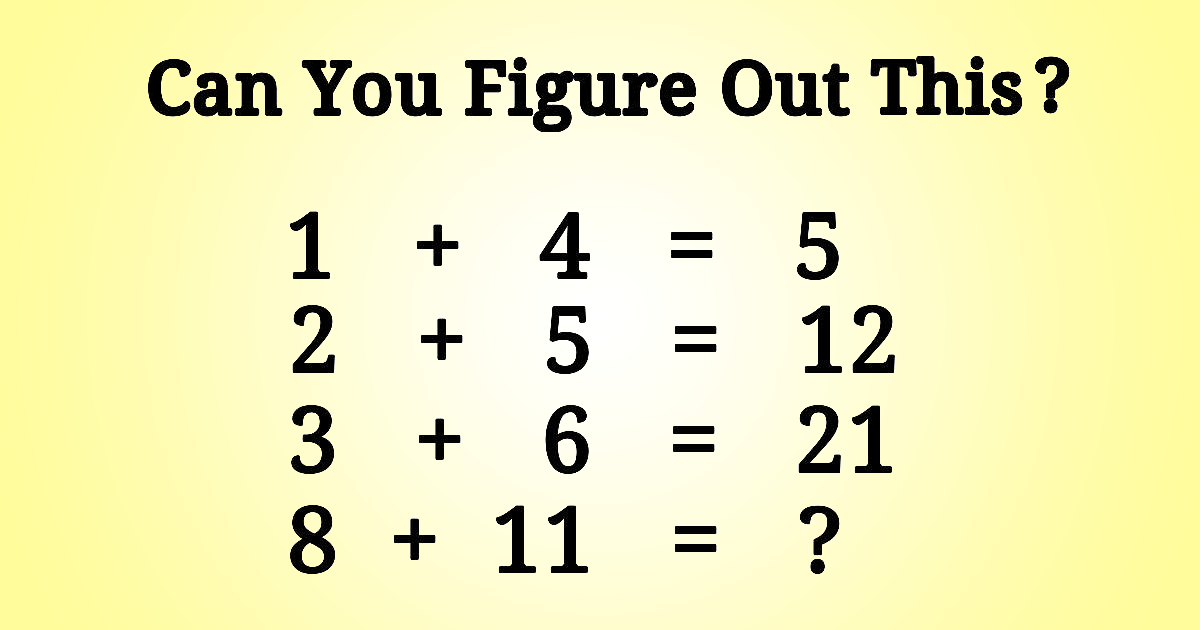Don’t be left out. Do you think you can solve this?

The question can be solved in two ways with two different solutions. But to give you a head start, if you got 40 as one of the answers, you are correct, and bravo!
Mathematically and logically speaking, there’s no way those summations are correct. Except, of course, the first one where 1 + 4 equals 5.
The challenge starts coming when you add the second problem to get seven, and the answer is given as 12.
What Happens in Between?
When you get the answer to this question, you have the solution to the whole equation.
The secret here is simple. Once you have the correct summation of any problem (except the first one), you add the results you got from the problem above the one you’re solving.
This is to say;
The second problem’s solution will be:
2 + 5 = 7 + (5)
So, 2 + 5 = 12
The third problem’s solution will be:
3 + 6 = 9 + (12)
Which will be; 3 + 6 = 21
The fourth and the last problem can therefore be solved as:
8 + 11 = 19 + (21)
8 + 11 = 40
The Second Solution

You’re probably wondering what the other solution is and what answer it will bring along.
If you choose to solve this with a more mathematically logical approach, you can bring in the multiplication signs.
Here’s How It’s Done
So instead of 1 + 4 = 5, you can have 1 x 4 + 1 = 5. Amazing isn’t it!
Then proceed with the same for the rest of the problems. You will find solutions like these:
2 x 5 + 2 = 12
3 x 6 + 3 = 21
However, things won’t be the same for the fourth problem. And that’s where the trap lies, and the different answer sets in.
8 x 11 + 8 = 96
Therefore, the second correct answer is 96.
If you managed to solve the problem with the two approaches on your own, you are a genius. Salute!
But will you let this pass your friends and family? Certainly not. Share with everyone close to you and even teach those who don’t grasp the concept as much as you did.
Let the math spread, be the bridge.





